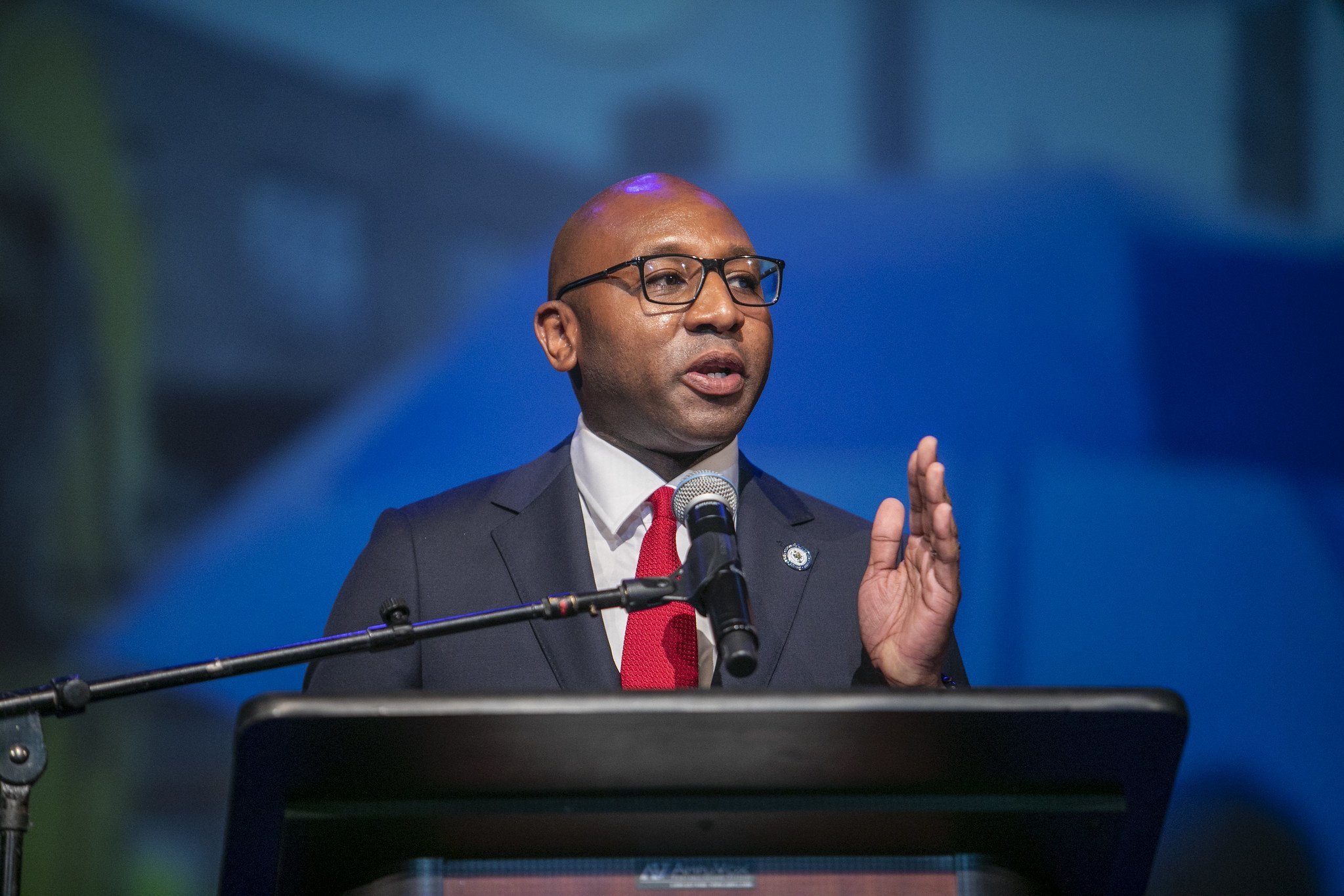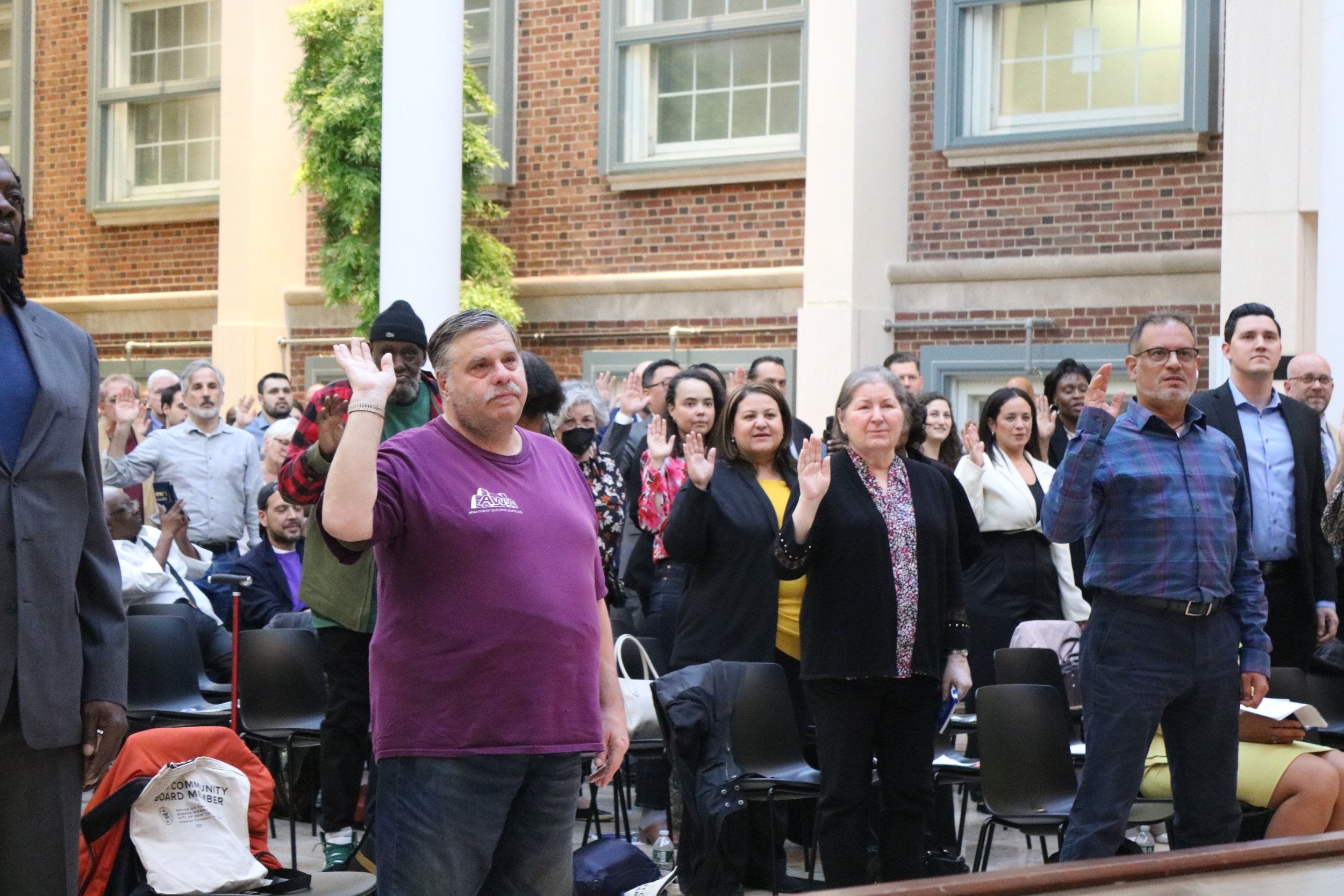Queens BP’s report shows ‘strides’ in diversifying community boards
/A report from Queens Borough President Donovan Richards lays out the demographic makeup in the borough’s 14 community boards. Photo Via Richards
By Ryan Schwach
Queens Borough President Donovan Richards released his office’s 2023 demographic report for the borough’s community boards on Monday, detailing the strides he says his office has made to diversify the boards since he took office.
The report, which the borough president issues annually, details the demographics of Queens’ 14 community boards, as well as the 116 new members sworn in this spring in the largest new class of Richards’ Administration.
“I’m deeply proud of the strides we’ve made since I took office to make the community boards in Queens look and feel more like the rich and diverse neighborhoods they represent,” said Richards. “While we continue to set the standard for what community planning and engagement can look like, I know there is still much work to do to reach our full potential. I’m confident we will continue to do so in the years ahead.”
Around 940 applications were received this year for open community board seats, just shy of an office record.
Making appointments to community boards is one of the borough president’s main duties and, upon election, Richards said that diversifying the boards was one of his main goals for office.
Richards said that he has attempted to diversify the boards in a number of ways, and not just by addressing the fact that they have for decades been majority older and white.
“Queens is a special place, we talk about our diversity, and I ran on the theme of making sure that our community boards are reflective of the various communities that you live in,” Richards said at the swearing in of new members in April. “I can tell you it's really been great work by the office in ensuring that we can actually achieve more diversity across our community.”
In line with those efforts, 50 percent of new appointees are under the age of 45 and nearly 25 percent are between the ages of 16 and 35, his report says. Prior to Richards taking office in 2020, less than 12 percent of sitting community board members were under the age of 35, while nearly three-quarters of all members were over the age of 45.
The youngest of the new members is 16-year-old Tobias Paris, who is a member of Community Board 8.
“Twenty percent of Queens is under the age of 18, and when I was applying there were zero people under the age of 18,” Paris told the Eagle after he was sworn in in April. “So, I figured, let me be that person to represent a fifth of the population.”
Of course, there are still members of a group of longtime borough civil servants.
Community Board 5’s Paul Kerzner is the longest serving board member in Queens, having represented his communities for 51 years, starting as a volunteer member in 1972.
Nine members in total have been on a board for over 45 years.
Richards has also tried to get the boards to more accurately reflect Queens’ diversity.
Of the 116 new community board members, nearly 20 percent identify as Hispanic or Latino, an increase of nearly three percent from 2022’s group of new appointees. Black members make up nearly 22 percent of new appointees in 2023, while East Asian and Pacific Islanders make up nearly 14 percent and South Asians make up nearly seven percent. Nearly two-thirds, or about 64 percent, of the new appointees do not identify as “white,” a demographic category that has been historically overrepresented on community boards.
Looking at the boards as a whole, 146 members self-identify as Black, or about 18.7 percent of all members, which is about on par with Queens’ demographics with about 20 percent of residents identifying as Black in the 2020 census.
About 11 percent of the boards are Hispanic, while the borough as a whole is about 28 percent Hispanic based on the census.
The BP’s office also said that slightly over 10 percent of the new class identify as LGBTQIA+, which is nearly double from last year’s percentage. Over 11 percent identify as a person with a disability; over 16 percent are immigrants, and 31 percent are the parent or guardian of a school-aged child.
Mass transit users make up a significant chunk of the 2023 class of new members as well, with more than half of the 116 new appointees — about 51 percent — reporting they “mostly” or “often” navigate Queens by using the subway, while nearly 89 percent said they at least “sometimes” use the subway to get around. Additionally, nearly 76 percent of new appointees at least “sometimes” ride the bus, and nearly 32 percent at least “sometimes” use a bicycle or other micro-mobility vehicle for transportation.
The new class of community board members were sworn in by Richards in April at Borough Hall. Eagle file photo by Ryan Schwach
However, there is still more work to be done to get the community boards more reflective of the community boroughwide, the BP said.
While votes on affordable housing projects are among the top duties of community boards, only nine board members live in NYCHA houses, and only two live in Section 8 housing.
The majority of Queens community board members say they own a home.
Richards acknowledged that progress has been made, but there is still more to do.
“We’ve made significant progress across a wide range of demographics in terms of increasing interest in the community board application process, which has led to three straight diverse classes of new community board members across Queens’ 14 boards,” said Richards in a comment to the Eagle. “However, we recognize that the job of reversing long standing inequities across these boards is not done — more progress can and will be made in the years to come.”
He says his office has worked to try and work with tenant associations at NYCHA housing to push for more residents to apply.
“Every year, our office leverages our existing contacts at NYCHA developments across the borough and works with various tenant associations to encourage NYCHA residents to apply for board membership,” he said. “We will continue doing, and expanding on, that work in every community board appointment cycle to come.”





